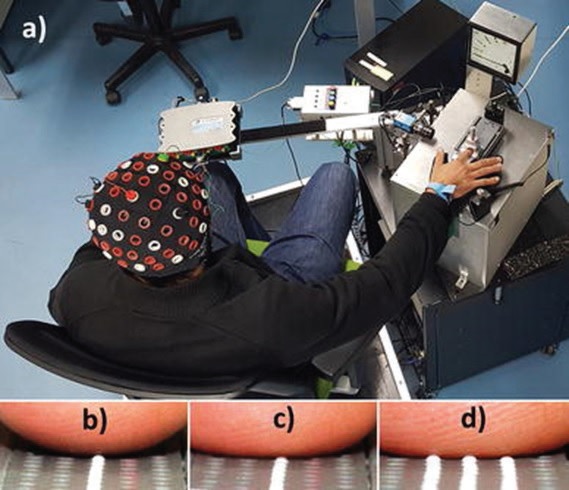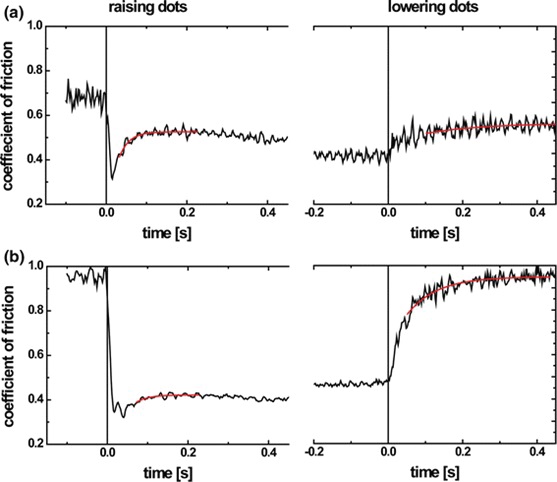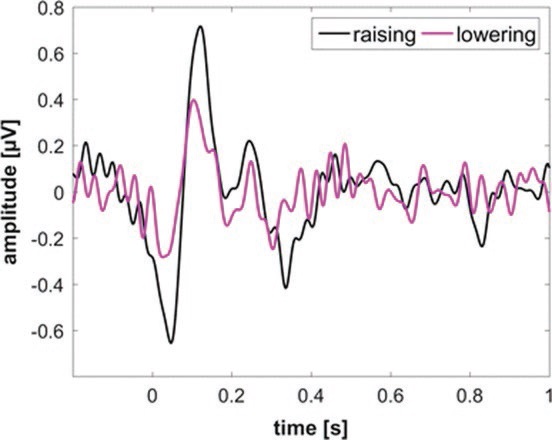Measuring the brain’s response to braille friction
Drs. Wilfred T. Tysoe & Nicholas D. Spencer | TLT Cutting Edge February 2018
By correlating electrical activity with tribological measurements, researchers are deepening our understanding of the sensation of touch.
IN 1808 CHARLES BARBIER, A CAPTAIN IN NAPOLEON’S ARMY, invented so-called “night writing” or sonography to allow troops to communicate at night without having to speak or use lights. He accomplished this by developing a code to represent sounds that used two columns of six dots embossed on a square of paperboard. However, the 12 dots covered an area larger than a fingertip, making them difficult to read. This problem was solved by Louis Braille, who, at the age of 15, reduced the number of dots to six, and this represented the letters of the alphabet rather than sounds. This advance has, of course, significantly helped blind people to interact and communicate.
The problem of a soft fingertip sliding over an array of raised braille dots is clearly a tribological one, and the physiological response to changes in the tribological interface is the subject of the newly emerging field of haptics, which is becoming ever more important with the rise of computer touch screens.
However, assessing physiological responses can be extremely subjective. To address this problem, professor Roland Bennewitz and Novaf Özgün from the INM - Leibniz Institute of New Materials in Saarbrücken, Germany, collaborated with professor Daniel Strauss from the Systems Neuroscience and Neurotechnology Unit at Saarland University, also in Saarbrücken, to directly compare the tribological properties of a finger sliding over an array of dots to the resulting electrical response of the brain. This was done by correlating the electroencephalograms (EEGs) of the region of the brain that responds to touch, with the sliding friction of a finger in contact with a programmable braille display in which five lines of equidistant dots could be raised or lowered (
see Figure 1).
 Figure 1. (a) Setup for the simultaneous measurement of fingertip friction and EEG signals. (b) Fingertip in contact with the braille display. Light contact, one line of dots raised. (c) Firm contact, one line of dots raised. (d) Intermediate contact, three lines of dots raised. (Published with permission from Ref. [1].)
Figure 1. (a) Setup for the simultaneous measurement of fingertip friction and EEG signals. (b) Fingertip in contact with the braille display. Light contact, one line of dots raised. (c) Firm contact, one line of dots raised. (d) Intermediate contact, three lines of dots raised. (Published with permission from Ref. [1].)
Typical tribological responses found when raising and lowering the dots are shown in Figure 2, showing a clear change in friction. While there was significant variability between the results for different participants, the general behavior was similar. The friction variation was interpreted as being due to the effects of sliding on the surface of the braille display and changes caused by interaction with the raised dots. The time constants for the evolution in friction when raising or lowering the dots were different. The time scale when raising the dots is ascribed to the viscoelastic response of the skin to indentation by the dots, while the longer time scale found when lowering the dots is due to the skin reforming a conformal contact with the display surface.
 Figure 2. Characteristic development of the friction coefficients for two participants. The braille dots are raised and lowered at t=0. The curves are averaged over all trials. An exponential approach model has been fitted to the data (red curves) to extract characteristic time constants for the evolution of the friction coefficient. (Published with permission from Ref. [1].)
Figure 2. Characteristic development of the friction coefficients for two participants. The braille dots are raised and lowered at t=0. The curves are averaged over all trials. An exponential approach model has been fitted to the data (red curves) to extract characteristic time constants for the evolution of the friction coefficient. (Published with permission from Ref. [1].)
The averaged EEGs measured when rubbing, while raising and lowering the dots, are shown in Figure 3, which displays significant positive and negative deviations over the time scale of the friction experiment that are similar when the dots are raised and lowered. This clear correlation between the electrical response of the brain and changes in friction helps avoid the bias inherent in assessing the human perception of tribological interfaces.
 Figure 3. Grand average of the EEG signals. (Published with permission from Ref. [1].)
Figure 3. Grand average of the EEG signals. (Published with permission from Ref. [1].)
Eliminating this subjectivity by directly correlating the brain’s electrical activity with tribological measurements will put the design of haptic interfaces on a firmer footing, leading to the design of more responsive systems and perhaps even to more easily readable braille.
FURTHER READING
1.
Özgün, N., Straus, D.J. and Bennewitz, R. (2018), “Tribology of a braille display and EEG correlates,”
Tribology Letters,
66, p. 16.
 Eddy Tysoe (
Eddy Tysoe (left
) is a distinguished professor of physical chemistry at the University of Wisconsin-Milwaukee. You can reach him at wtt@uwm.edu.
Nic Spencer is professor of surface science and technology at the ETH Zurich, Switzerland, and editor-in-chief of STLE-affiliated Tribology Letters journal. You can reach him at nspencer@ethz.ch.